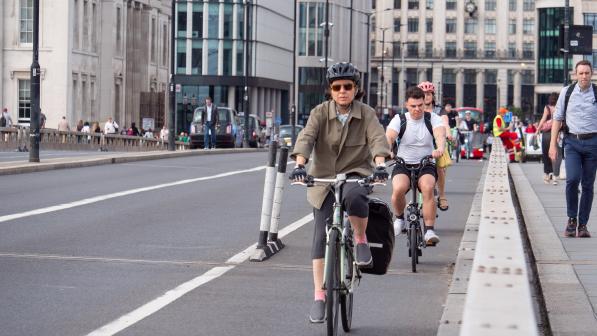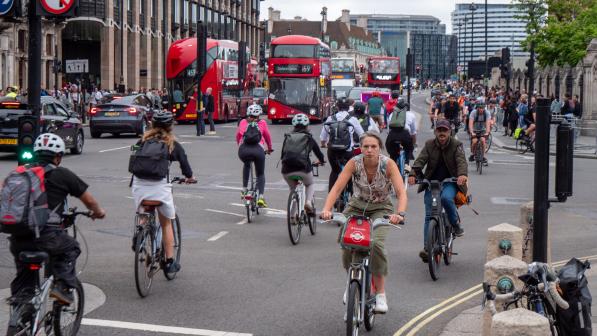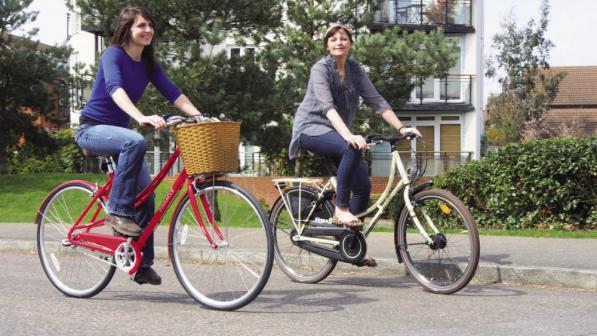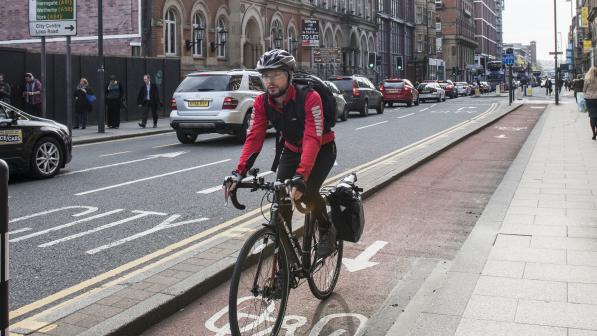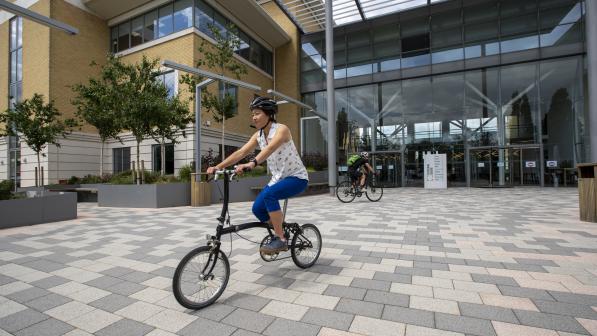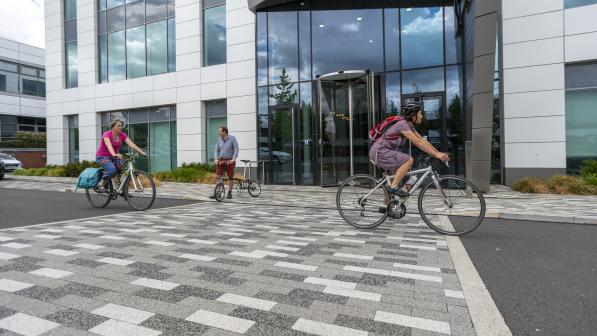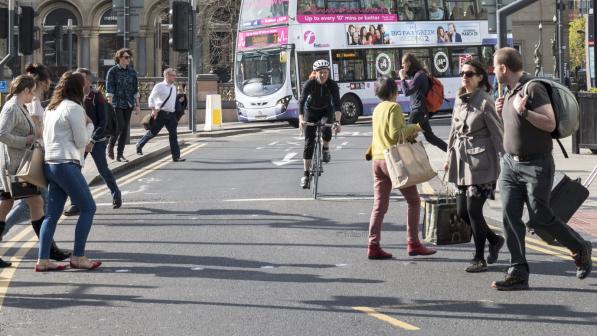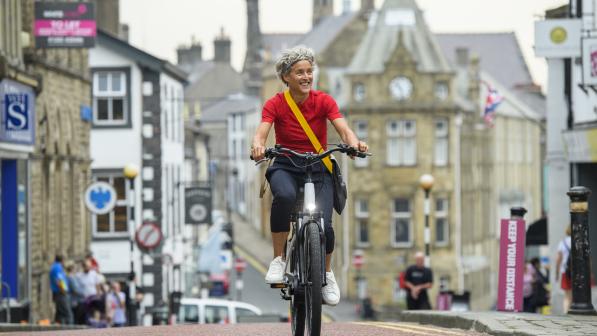A beginners’ guide to … the Cycle to Work scheme

Cycle commuting is a cheap and healthy way to get to work. And, depending on where you live, it’s often quicker than other options. You will, of course, need a cycle – which is where the government’s Cycle to Work scheme comes in.
The scheme, which is run through employers, is a cost-effective way of getting new equipment so that you can cycle to work. The cost of the new kit comes directly out of your salary, so you don’t pay tax or National Insurance on it, saving between 28% and 47%, depending on which tax bracket you’re in. But how does it work and how do you apply? This guide explains all.
What is the Cycle to Work scheme?
The government first introduced its Cycle to Work scheme in 1999 as a way of promoting healthier journeys to work and reducing air pollution. According to the Cycle to Work Alliance (CTWA) – a coalition of the five biggest providers of the scheme – more than 2 million commuters working for 40,000 employers have received a cycle through the scheme.
It’s what’s known as a salary-sacrifice employee benefit. This is where you agree to give up part of your pre-tax salary in exchange for a benefit – in this case cycling equipment – from your employer. In essence, your employer buys the cycle, and you hire it. The loan period is usually between 12 and 18 months but can be longer.
The ‘pre-tax’ part is where the savings come in. Because the payment is made before deductions, you won’t pay tax on that portion of your salary, saving you money on both income tax and National Insurance. How much you save depends on your tax bracket and the total cost of the kit.
How it works
Your employer will have to be registered with one of the various scheme providers on offer. You choose what equipment you need, which can include the bike itself, clothing and accessories, and then submit your application to your employer.
Once your employer has approved your application with the service provider, they pay for the kit and you receive a voucher, redemption code or Letter of Collection – depending on which provider is being used. This is what you hand over to the retailer in payment, rather than your hard-earned cash.
You then pay your employer back through monthly instalments, which are automatically taken through payroll, for the agreed hire period. How much you pay each month depends on the total value of the loan.
There are several online calculators that will work out your payments based on your salary and the cost of the kit. As a guide, let’s say you earn £31,602 per year (the UK national average as of the October 2024 according to HMRC). You want a cycle that costs £1,000, with helmet and other accessories adding up to £500, so a respectable total of £1,500.
Over a 12-month period, your salary reduction – that is, how much is deducted from your pay each month – is £90. This adds up to £1,080, saving you £420, or almost a third of the retail price.

This is a hire scheme, so at the end of the loan period you won’t own the kit. At this point you have three options. You can return the gear to the provider – maybe to apply for an upgrade. You can buy the equipment at what HMRC calls a “fair market price”, which could be up to 25% of the value of the package.
Finally, you can extend the loan agreement for another three years for a small refundable deposit of either 3% or 7% of the kit. You make no further payments during this period. At the end of the three years, you can either return the equipment and get your deposit back or keep the kit for no further cost.
What you can get
Now the important part: what can you actually buy? A cycle, obviously, and according to HMRC, this means “a bicycle, a tricycle, or a cycle having four or more wheels, not being in any case a motor vehicle”; e-cycles are also included.
You don’t have to buy a ‘commuter’ bike. Any cycle that can get you to work, or part of your journey, is eligible. However, government guidelines state that you should use your bike and accessories for commuting for at least half of its usage.
It also includes what HMRC calls “cyclists’ safety equipment”. There’s no legal definition of this, but it can include:
- Cycle helmets which conform to European standard BSEN1078
- Bells and bulb horns
- Lights, including dynamo packs
- Mirrors and mudguards to ensure riders’ visibility is not impaired
- Cycle clips and dress guards
- Panniers, luggage carriers and straps to allow luggage to be safely carried
- Child safety seats
- Locks and chains to ensure the cycle can be safely secured
- Pumps, puncture repair kits, cycle tool kits and tyre sealant to allow for minor repairs
- Replacement parts to keep a cycle roadworthy
- Adaptations for disability/mobility requirements
- Reflective clothing or reflective cycle equipment such as spoke reflectors
The total amount you could spend was previously capped at £1,000, but in June 2019 the restriction was removed. This is great news for anyone needing a non-standard cycle or e-cycle, which would have been far too expensive to be eligible.
This doesn’t mean you can splurge on that high-end downhill mountain bike you’ve been hankering for. Your employer will set their own limit which will reflect the needs of the workforce.
Each of the providers have their own preferred suppliers, but thousands of bike shops and online retailers are signed up. Several brands that sell direct to the public are also involved, including well-known names like Canyon, Cannondale and Specialized. Some of the larger retailers include sale items, but not all, so it’s worth checking in advance.
As with all cycle purchases, it’s a good idea to shop around and discuss your personal needs before committing to anything.

Major providers
There are several providers that employers can register with. The main ones are: Evans Cycles’ Ride to Work, Cyclescheme, Vivup, Halford’s Cycle2Work, Bike2Work, Green Commute Initiative, Gogeta, Dash Rides and Cycle Solutions.
Five of the largest providers – Cyclescheme, Cycle Solutions, Evans Cycles, Halfords and Vivup – have come together to create the Cycle to Work Alliance (CTWA). The coalition says it represents 80% of the Cycle to Work market. It actively supports employers through setting up the scheme and works with them to help embed a cycling culture in the workplace.
Each of the schemes is slightly different so if you’re an employer looking to set up a scheme it’s worth checking out the websites to see what’s on offer.
Cycle share schemes
In 2024, the Cycle to Work programme was extended to include users of cycle share schemes such as Lime, Santander, Forest, Beryl and Voi. These schemes allow users to hire bikes and e-bikes to make short journeys, picking them up from on-street parking areas and delivering them back to another.
This applies to people who take out a monthly or annual subscription to the service and works in the same way as purchasing a bike. The employer pays for the subscription service and then claims the cost back from the employee via monthly payroll. The savings are the same too.
This means that anyone who doesn’t want to own or store their own cycle can now take advantage of the Cycle to Work scheme. This is particularly beneficial to anyone living in shared accommodation or places with nowhere to keep a bike securely.
Currently, the only provider catering to employees who prefer bike share over owning a bike is CycleSaver. The organisation works with a range of cycle share providers and offers a flexible monthly subscription. It’s available in more than 30 towns and cities across the UK.
Employers can sign up with more than one Cycle to Work provider, meaning they can offer a CycleSaver scheme alongside one of the traditional programmes.
Benefits
For employees
The biggie is that you get a new cycle, along with necessary accessories, at a discount. There’s no upfront payment, no interest and you can spread the payments over 12 to 18 months. At a time when many of us are feeling the pinch, this is a big help.
You’ll also save money on your commute. How much depends on how far you travel, by what means and even where you happen to live. As a guide, research by Cyclescheme showed that, with a five-mile-each-way commute, you could save more than £3,000 a year by swapping your car for a cycle.

Halfords’ ‘Cyculator’ is a fun and easy-to-use tool that will estimate the cost of your journey based on cycling, driving and public transport.
The benefits don’t stop there. You’ll also get fitter, improve your wellbeing and reduce your carbon footprint. You’ll also be helping to reduce pressure on the NHS.
For employers
It costs nothing to sign up – the price of the bike is fully recovered from employees. In fact, employers also save money: up to 15.05% in National Insurance contributions for every employee who takes part in the scheme.
There’s also plenty of research showing that cycling to work makes employees happier, healthier and more productive. It also reduces absenteeism; on average people who cycle to work regularly take 1.3 fewer sick days per year than those who don’t.
Cycling UK understands very well the benefits of cycling to work, which is why the organisation set up its Cycle Friendly Employer accreditation. This is the international benchmark for active travel culture and infrastructure in the workplace. You can find out more about how this works in our comprehensive guide.
Drawbacks
It’s important to be aware that you don’t own the cycle at the end of the hire period. But there are ways around this. You can buy it for around 25% of the market value. You’ll still make a significant saving, and some employers cover this cost themselves. Alternatively, you can extend the hire period for a nominal cost, at the end of which all the kit is yours.
The scheme is only open to employees who pay tax on a PAYE (Pay As You Earn) basis. This means freelancers, ‘gig’ workers and the self-employed – who make up a significant and growing proportion of the workforce – are exempt.
National Minimum Wage rules mean that employers can’t make salary sacrifice deductions that would take employees’ salary below this. So those on or near minimum wage can’t access the scheme, either.

However, in 2022 groups including the Federation of Small Businesses, the Co-op and British Cycling wrote to the chancellor calling on the then government to change these rules. So far nothing has happened, but Minister for Local Transport Simon Lightwood pledged to review the Cycle to Work scheme in late 2024.
Cycling UK’s Senior Policy Officer Monica Scigliano has some suggestions for how it could be improved.
The CTWA has asked the government to introduce a specific exemption for the Cycle to Work scheme from the National Minimum Wage regulations. This would allow employers to enter staff into a salary sacrifice arrangement solely for the purpose of buying a cycle and accessories, even if it brings their take-home pay below minimum wage.
The alliance is also calling on the government to include the Cycle to Work scheme as a permissible expense under travel costs for self-employed workers, just as train tickets and fuel are currently.
Adrian Warren, chair of the Cycle to Work Alliance, commented: “The Cycle to Work scheme plays an important role for employers and employees. Employees get access to a healthy, low-carbon and low-cost commuting option, and employers can demonstrate their commitment to health and employee wellbeing in an easy-to-manage way.
“The Cycle to Work Alliance is committed to ensuring that the scheme is forward looking, good value, and as inclusive as possible, and is working with government and wider industry to achieve this.”
There is also the inaccurate perception that the scheme is time consuming, complicated and difficult to implement, making it not worth the effort for small businesses and leading to lower uptake among such organisations.
However, scheme providers offer an important role in simplifying the process, even handling the administrative duties. Cycling UK can also offer support and advice through the Cycle Friendly Employer project.
What next?
If you’re an employee, first find out if your company offers a Cycle to Work scheme – and if not, get in touch with HR to let them know about the benefits it brings. If you’re an employer, now is the time to start looking into it.
If you need any advice, register with our Cycle Friendly Employer scheme for help and advice. If you have any questions about CFE accreditation, check out our FAQs.

